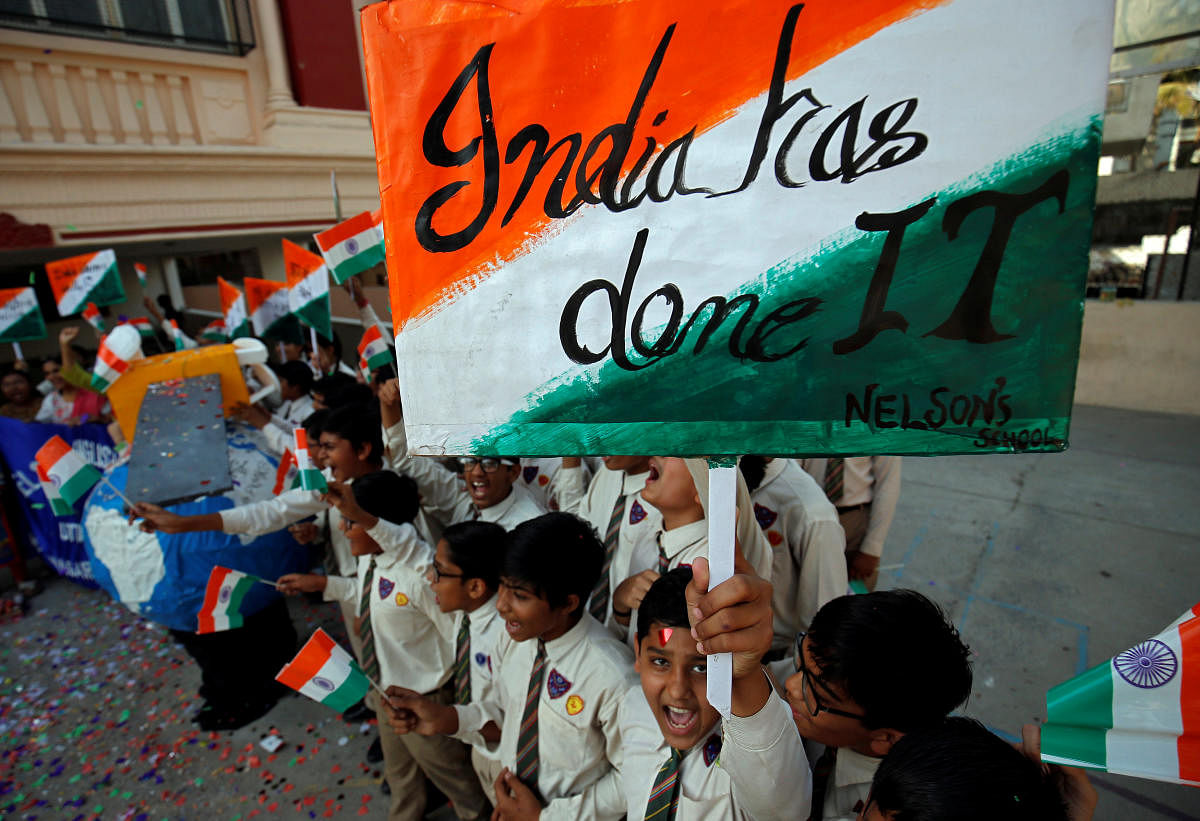In the last week of March, India demonstrated its capability to shoot down a satellite in low earth orbit (LEO) with an anti-satellite (ASAT) missile at a height of approximately 300 km. The remarkable test — an exhibition of strategic deterrence capability — signalled intent and resolve, in addition to technological competence.
While the scientists deserve compliments for this spectacular achievement, the question that will be inevitably be asked is this: Is India joining the race for the ‘weaponisation’ of space? India is now a major space power with substantial civilian and military stakes in space and must decide whether it wishes to support and join the current race to weaponise space or oppose it.
The militarisation of outer space — often called the ‘last frontier’ and the ‘ultimate high ground’ — happened many decades ago when military satellites began to be deployed for surveillance, communications and navigation. In January 2007, China demonstrated its ability to physically destroy a satellite in space by firing a missile at it. The Russians and the Americans already had this capability. Since then, it is being debated whether the weaponisation of space will inevitably follow.
A headline in the Jane’s Defence Weekly a few years ago had stated: “USAF Eyes Relay Mirrors to Extend Range of Lasers”. In bold type-face, the first paragraph of the news item had proclaimed ominously: “High-powered laser weapons are expected to make their operational debut later this decade, according to military planners who say these weapons will revolutionise future battles by giving US forces the ability to hit targets with lethal beams of energy delivered at extreme speed and over great distances.”
The deployment of weapons systems will turn outer space into a potential battlefield — a platform from which to seek strategic superiority on the ground. It looks like Ronald Reagan’s Star Wars programme all over again. Plans are in the offing to utilise high-flying airborne lasers on-board modified Boeing 747 aircraft to generate multi-megawatt laser beams. These beams will be then reflected by a relay of 5-metre diameter mirrors arrayed in outer space to shoot down nuclear-tipped ballistic missiles during their boost phase.
President Donald Trump approved the establishment of the US Space Command — the 11th unified command — in December 2018. However, the US Air Force Space Command has been in existence for long. In January 2001, it had completed a major war-game set in space where “attack satellites and lasers fought computer hackers and space planes in a simulated struggle reflecting the Pentagon’s growing belief that the key battles of the 21st century may be fought in space.”
The US military has gradually come to accept space as a future battlefield and a new theatre of operations. The world may soon hear about killer satellites armed with lasers, space mines, electronic jamming systems and logic bombs and viruses that can cripple computer-based command, control, communications and intelligence systems.
Plans which are now underway for the military use of space will negate the Outer Space Treaty and the Anti-Ballistic Missile Treaty. The Outer Space Treaty of 1967 bans the deployment of weapons of mass destruction in space. The 1972 Anti-Ballistic Missile Treaty, abrogated now because of the ongoing US programme to develop missile interceptors, enjoined the signatories not to deploy anti-ballistic missile interceptors in space. The abrogation of these treaties does not augur well for future arms control and disarmament negotiations.
Russian President Vladimir Putin has expressed serious concern over the increasing militarisation of space and called upon the world community to “redouble its efforts to preserve a peaceful outer space for the sake of future generations.” China had called for a ban on the testing, deployment and use of all weapons, weapons systems and their components in outer space before its anti-satellite test. It has suggested the establishment of a UN committee to draw up a binding international instrument to prevent an arms race in outer space.
India has consistently opposed the military use of space and supports the emergence of a rules-based order for outer space. India supported UNGA resolution 69/32 on ‘no first placement of weapons in outer space’. India also supports discussions on PAROS (prevention of an arms race in outer space) at the Conference on Disarmament at Geneva.
Addressing an ESCAP-sponsored Space Applications conference in November 1999 at New Delhi, then prime minister Atal Bihari Vajpayee had said: “I cannot over-emphasise the need for developing space applications for global peace and security. Space must become the newest frontier not for an arms race but for humankind’s collaborative and common race for development.”
At the Space Summit of the Indian Science Congress in Bengaluru in early January 2003, then President Abdul Kalam had called for the establishment of an “International Space Force” to ensure that conflict on earth does not spill over into space or harm the space assets of mankind. Today, it sounds like Utopian thinking.
The famous Cold War analyst Raymond Aron had observed with quiet resignation: “Short of a revolution in the heart of man and the nature of states, by what miracle could inter-planetary space be preserved from military use?” When Robert Browning wrote, “Man’s reach should exceed his grasp/otherwise what is heaven for?” he could not have imagined that man will one day attempt to dominate the heavens. Mankind’s last frontier must never be allowed to become the last battlefield between nation-states.
As for India, if the government concludes that the West, China and Russia are going down the weaponisation route, it must lose no further time in sanctioning a tri-Service space command and giving it a wide-ranging charter to develop and field Indian weapons in space. However, there is hope yet if the international community makes concerted efforts and public opinion can be aroused to oppose the weaponisation of space.
(The writer is former Director, Centre for Land Warfare Studies, New Delhi)
